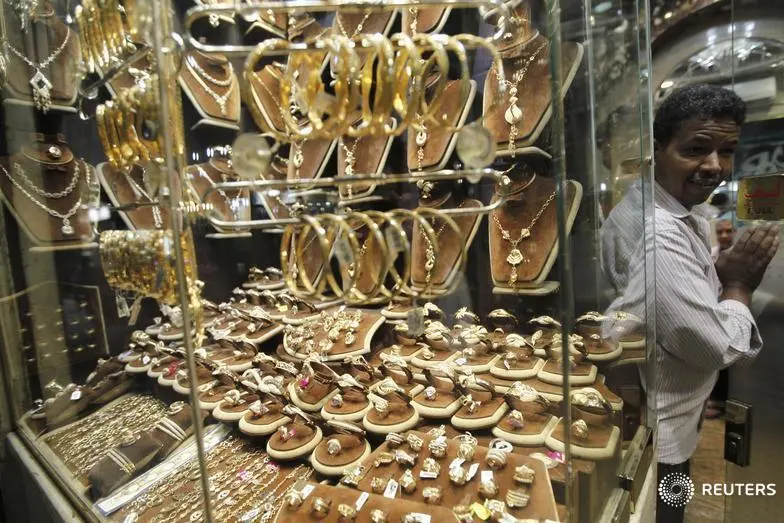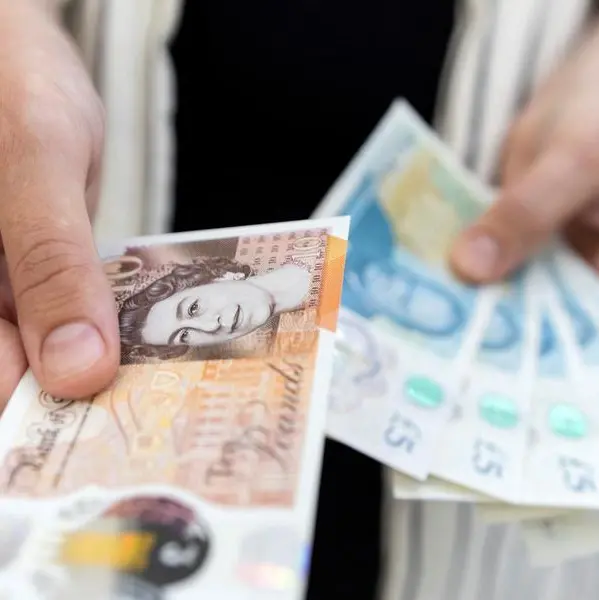PHOTO
Demand for gold jewellery in Egypt rose by 10 percent in the second quarter of 2018 year-on-year, but the gain was not seen as significant as the comparative period for 2017 represented a record low for gold demand in the Arab world’s most populous nation, according to the World Gold Council.
However, a Cairo-based gold retailer sees demand picking up this summer, mainly driven by sales from Gulf Arab nationals and Egyptian expats who live in Saudi Arabia and the United Arab Emirates.
The World Gold Council (WGC) report said that gold jewellery demand in Egypt in Q2 rose to 5.1 tonnes, a rise the report said was “somehow misleading” as the comparison was made against a record low of 4.7 tonnes scored in the second quarter of last year. Jewellery demand for the first six months increased by 6.7 percent to 11.1 tonnes.
“I wouldn’t make too much of this (increase) – demand rose from a very low base.” Alistair Hewitt, United Kingdom-based director of market intelligence in the WGC, told Zawya in an email interview last week.
Bahaa Al-Din Namatallah, who sells gold jewellery in Taiba Jewellery shop in Cairo told Zawya in a phone interview on Thursday that he expects a rise in the sales of gold jewellery this summer.
“I see a noticeable activity since last June. Many Egyptians who are living abroad and Arabs from Gulf states are opting to buy from Egypt given the low value of the Egyptian pound compared to other currencies,” Namtallah said, noting that 1,000 UAE dirhams now buys a tourist almost 5,000 Egyptian pounds.
Egypt floated its currency in November 2016, which has led to a devaluation against the US dollar, to which the UAE dirham is pegged. One UAE dirham used to cost around 2.5 Egyptian pounds prior to the currency flotation.
Namatallah said the introduction of a 5 percent value-added (VAT) tax in Saudi Arabia and the UAE this year also helped to boost demand in the Egyptian gold market, mainly driven by UAE and Saudi nationals visiting Egypt, along with Egyptian expats who live in the two Gulf Arab states.
Hewitt said: “The Egyptian local gold price moved to a $7-8 premium in July reflecting more consumer interest, especially in 18 karat (gold) jewellery, which is a segment typically associated with wealthier customers. That said, we also saw modest gains in the 21 karat category, which accounts for the bulk of demand.”
Economic hardship
Egypt is the Middle East’s third-biggest economy, with a population of more than 97 million people. Its economy was hit hard after the Arab spring protests that erupted in Egypt in January 2011. The political turmoil that followed led to a decline in the value of the country’s currency, and foreign reserves fell to record lows.
Pressure intensified on Egyptian consumers last year, following the government’s decision to float its currency in late 2016, which slashed its value against the US dollar by almost half. Headline inflation rose to a record high of 33 percent in July 2017, but the rate has since moderated to 13.5 percent last month.
“Last year was one of the worst years in Egypt, the economic situation was very bad,” Namatallah said.
Egypt has managed to secure a $12 billion loan from the International Monetary Fund (IMF), which was seen as positive news for many investors and business persons. But the loan was followed by a series of austerity measures which included several subsidy cuts that have hiked fuel and utility prices.
The country’s GDP was expected to have grown by 5.2 percent in the last fiscal year that ended in June, according to IMF estimates.
(Reporting by Yasmine Saleh; Editing by Michael Fahy)
(yasmine.saleh@thomsonreuters.com)
Our Standards: The Thomson Reuters Trust Principles
Disclaimer: This article is provided for informational purposes only. The content does not provide tax, legal or investment advice or opinion regarding the suitability, value or profitability of any particular security, portfolio or investment strategy. Read our full disclaimer policy here.
© ZAWYA 2018












